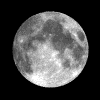Department of Physics and Astronomy: Publications and Other Research

Edward Schmidt Publications
Document Type
Article
Date of this Version
February 1982
Abstract
We have undertaken a program to study the behavior of chromospheres in classical Cepheids using both ground-based and satellite-based observations. Five stars, δ Cep, η Aql, β Dor, ζ Gem, and l Car, have been included, and where possible the various types of data have been obtained simultaneously. The first part of this investigation concerns low dispersion spectra from the IUE satellite. Fine error sensor (FES) magnitudes are presented for the five Cepheids and, in the case of one, η Aql, are used to re-discuss the period. The "artificial viscosity dip" predicted by some theoretical calculations may be present in our FES light curve of δ Cep. The low dispersion spectra have been used to determine continuum magnitudes at various ultraviolet wavelengths, and light curves are shown. The amplitude increases with decreasing wavelength except around 1550 Å. Line emission in the short wavelength region (1100 to 1900 Å) is observed in three of the Cepheids and is found to be phase dependent. Some correspondence is found between the variation of the emission lines and the appearance of bumps on the ultraviolet light curves.


Comments
Published in The Astrophysical Journal Supplement Series 48, 185 (1982). Published by the University of Chicago Press; copyright © 1982 American Astronomical Society; reproduced by permission of the AAS. http://www.noao.edu/apjsup/apjsup.html